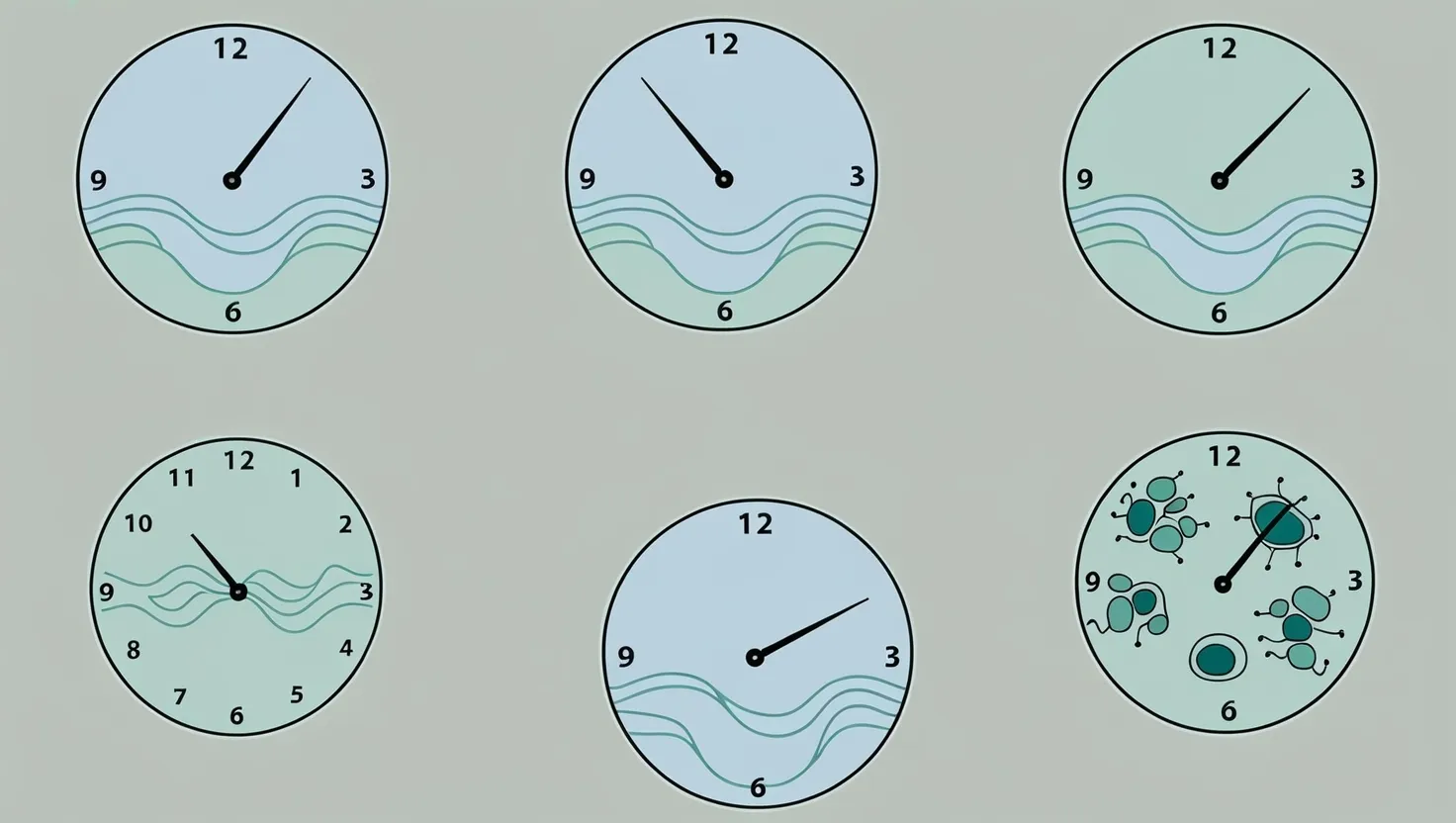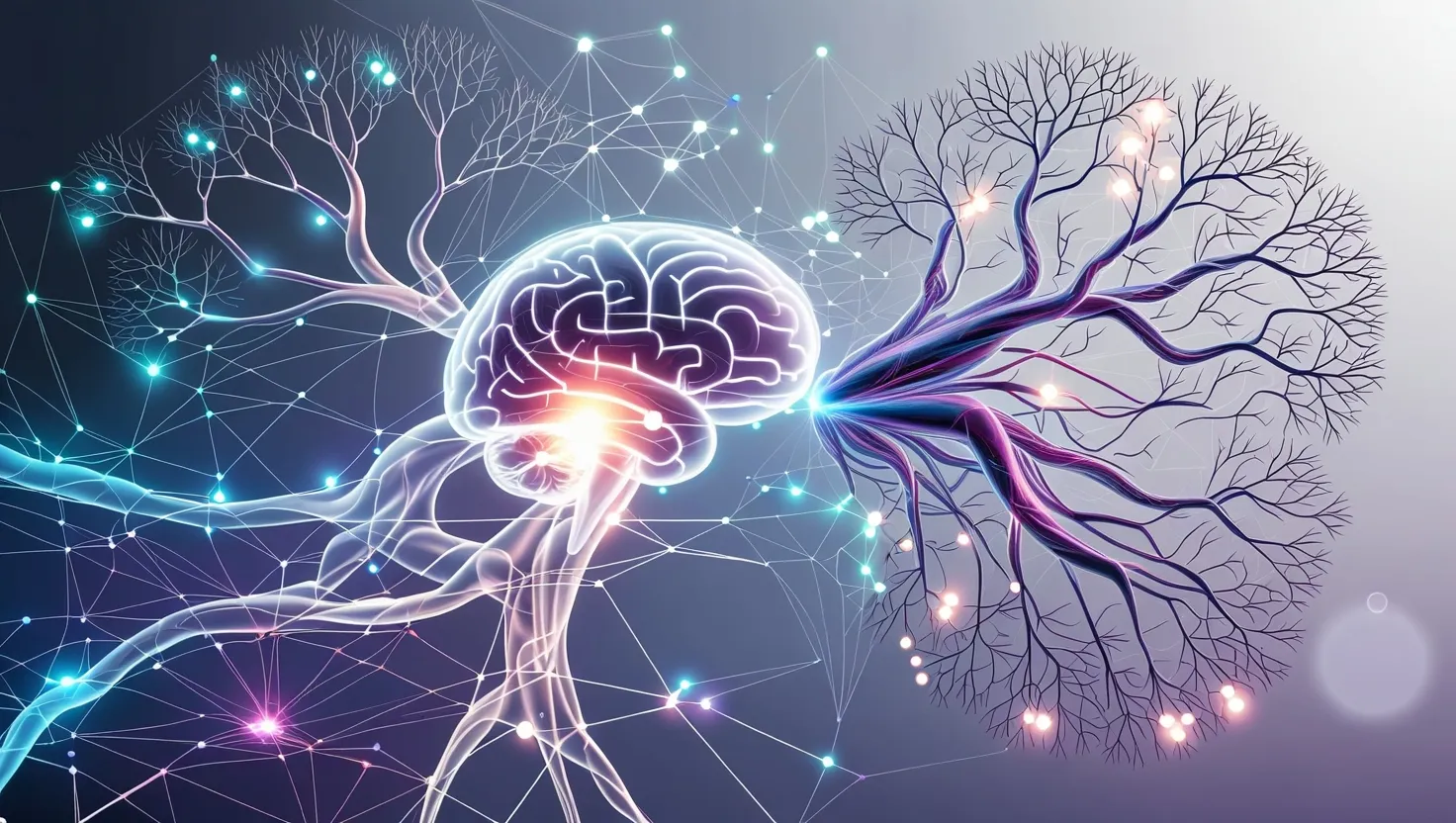The hidden world of biological clocks that time our existence is far more complex and fascinating than most of us realize. These internal timekeepers govern everything from our sleep patterns to our cognitive abilities, and even direct the life cycles of plants and animals across the globe. The precision of these mechanisms is nothing short of remarkable, operating across timeframes from minutes to years.
I’ve always been fascinated by how life seems to dance to rhythms we can’t see. Consider this - right now, in your body, countless cellular clocks are ticking away, coordinating processes that keep you alive and functioning. This invisible orchestration happens constantly, whether you’re aware of it or not.
“Nature does not hurry, yet everything is accomplished.” - Lao Tzu
This wisdom from ancient China perfectly captures the essence of biological timing. Nature operates with precision without rushing, and biological clocks exemplify this principle beautifully. Let’s explore five of the most surprising biological clocks that shape life in ways most of us never consider.
Every cell in your body contains its own independent clock. This isn’t just a figure of speech - scientists have demonstrated that individual cells removed from an organism and grown in laboratory conditions continue to maintain their 24-hour rhythms. These cellular circadian clocks function as independent timekeepers, creating a distributed network throughout your body. Even without input from the brain’s master clock in the hypothalamus, they keep ticking.
What makes this truly remarkable is that these cellular clocks aren’t simple timers. They’re complex molecular mechanisms involving genes that switch on and off in precise cycles. This distributed timekeeping system ensures that your liver, heart, and skin all know when to perform their specialized functions at the right time of day. Have you ever considered that your organs operate on schedules, just like you do?
The junco bird (Junco hyemalis) demonstrates this principle clearly. In the wild, these birds reproduce only during seasons with long daylight hours. Even when kept in laboratory environments with ideal temperature and abundant food, they won’t reproduce if daily light exposure falls below 12 hours. Their biological clocks override all other favorable conditions, strictly enforcing seasonal timing for reproduction.
Migratory animals possess another type of biological clock connected to Earth’s magnetic field. These internal compasses operate on annual cycles and recalibrate based on seasonal magnetic variations. This allows birds, butterflies, and sea turtles to navigate with astonishing precision across thousands of miles.
What’s particularly fascinating is that these magnetic timekeepers seem to integrate quantum-level processes. Some migratory birds have proteins in their eyes that may detect quantum effects triggered by Earth’s magnetic field. These processes could create visual signals that only the birds can see, essentially giving them a magnetic “map” overlaid on their normal vision. Can you imagine seeing magnetic fields as part of your everyday visual experience?
“In nature, nothing is perfect and everything is perfect. Trees can be contorted, bent in weird ways, and they’re still beautiful.” - Alice Walker
The timing precision extends to ocean environments as well. Marine organisms display tidal biological rhythms that follow 12.4-hour cycles synchronized with ocean tides. Coastal creatures like crabs, mussels, and certain fish species have internal clocks that anticipate the rise and fall of tides, allowing them to optimize feeding, mating, and protection from predators.
What’s truly remarkable is that these tidal rhythms persist for weeks in laboratory conditions far from any tidal influence. Researchers have observed shore crabs continuing to display activity patterns matching their home beach’s tidal schedule even when placed in constant laboratory conditions hundreds of miles inland. The internal clock is so robust that it operates independently of actual tidal cues. How does a tiny organism develop such a sophisticated timing system?
The study of plants offers another window into the importance of biological timing. Take Arabidopsis thaliana, a small flowering plant used extensively in research. When its internal clock matches the 24-hour environmental cycle, it grows vigorously. However, plants with genetically disrupted clocks show significantly reduced growth - about half the normal rate. Even more telling, healthy plants placed in environments with 20-hour or 28-hour light-dark cycles also show stunted growth of about 50% compared to those in standard 24-hour cycles.
This demonstrates that synchronization between internal clocks and environmental rhythms is crucial for optimal biological function. When internal and external timing align, organisms thrive; when they’re out of sync, performance declines dramatically. Think about this the next time you experience jet lag - your discomfort is essentially a timing mismatch between your body’s clocks and the external world.
Beyond daily rhythms, our bodies also operate on shorter ultradian cycles of 90-120 minutes throughout the day. These rhythms govern hormone release, metabolism, and cognitive performance. During these cycles, your insulin sensitivity fluctuates, your brain alternates between focused analytical thinking and more creative, diffuse processing, and your energy levels rise and fall.
Have you noticed how your productivity and mental clarity seem to wax and wane throughout the day? This isn’t random - it’s your ultradian rhythm at work. Understanding these shorter cycles can help you optimize your daily schedule, aligning demanding cognitive tasks with your body’s natural peaks in performance.
“The butterfly counts not months but moments, and has time enough.” - Rabindranath Tagore
Perhaps most mysterious are the biological clocks synchronized with lunar cycles. Coral spawning events across entire reef systems occur during specific moon phases. Many bird species time their migrations not just by daylight hours but also by the moon’s position. Even human menstrual cycles, averaging 29.5 days, closely match the lunar month of 29.53 days - though the exact relationship remains debated among scientists.
These lunar timekeepers may operate through mechanisms involving melatonin production and sensitivity to subtle electromagnetic field changes. The full moon increases nighttime brightness by about 25 times compared to a new moon, potentially affecting hormone production in sensitive organisms. Could your sleep disturbances during full moons be more than just coincidence?
The diapause mechanism in insects represents another fascinating biological clock. This form of dormancy is regulated by networks of hormones and proteins that respond to environmental cues like temperature and day length. Insects enter suspended animation during unfavorable seasons, with their metabolism slowing dramatically while development pauses. When conditions improve, development resumes precisely where it left off.
This biological timing system allows insects to synchronize their life cycles with seasonal resources, ensuring they emerge from dormancy when food is abundant and conditions favor reproduction. The molecular precision of this pause-and-resume system far exceeds anything human engineers have designed. What would it be like if humans could temporarily suspend our biological processes during difficult times?
“Time isn’t precious at all, because it is an illusion. What you perceive as precious is not time but the one point that is out of time: the Now.” - Eckhart Tolle
While Tolle speaks of transcending time, biological clocks remind us that we remain firmly bound to it. Our modern lifestyles often conflict with these ancient timing systems. Artificial lighting, shift work, and trans-meridian travel disrupt our circadian rhythms, potentially contributing to health issues from metabolic disorders to cognitive decline.
Consider how you feel after a night of poor sleep or when traveling across multiple time zones. That foggy, disoriented feeling is your body’s timing systems struggling to realign. Our biological clocks evolved over millions of years to synchronize with natural light cycles, and our recent technological innovations have outpaced our biology’s ability to adapt.
A complex network called the central oscillator regulates the rhythm of these 24-hour cycles and handles the time adjustment function. This molecular machinery involves genes that switch on and off in feedback loops, creating waves of activity that measure the passage of time. The sophistication of this system suggests that accurate timekeeping provides significant evolutionary advantages.
Do you ever wonder why nearly all life on Earth evolved these timing mechanisms independently? The universal presence of biological clocks across species suggests that synchronizing internal processes with external cycles provides fundamental survival benefits.
“The future is something which everyone reaches at the rate of sixty minutes an hour, whatever he does, whoever he is.” - C.S. Lewis
While Lewis reminds us of time’s relentless forward march, biological clocks show us that not all hours are experienced equally by our bodies. Morning hours trigger different hormonal responses than evening hours. Summer daylight activates different genetic programs than winter daylight. The sixty minutes in each hour may be constant, but our biological experience of them varies dramatically.
The study of biological clocks has practical applications in medicine, agriculture, and even space exploration. Understanding these timing systems could help us develop better treatments for sleep disorders, more effective timing for medication delivery, and crop varieties with optimized growth cycles. For future space travelers, maintaining healthy biological rhythms during long journeys without Earth’s familiar day-night cycles presents a significant challenge.
What timing patterns have you noticed in your own life and health? Do you experience predictable energy fluctuations throughout the day? Have you observed seasonal changes in your mood, appetite, or sleep patterns? By paying attention to these rhythms, you might gain insights into your own biological clocks and learn to work with them rather than against them.
The more we learn about biological clocks, the more we appreciate their fundamental role in sustaining life. These time-keeping mechanisms represent one of evolution’s most precise and widespread innovations, coordinating life processes across multiple timescales with remarkable accuracy. In a very real sense, life doesn’t just exist in time - it actively measures and responds to it, creating an intricate dance between internal processes and external rhythms that has continued uninterrupted for billions of years.






